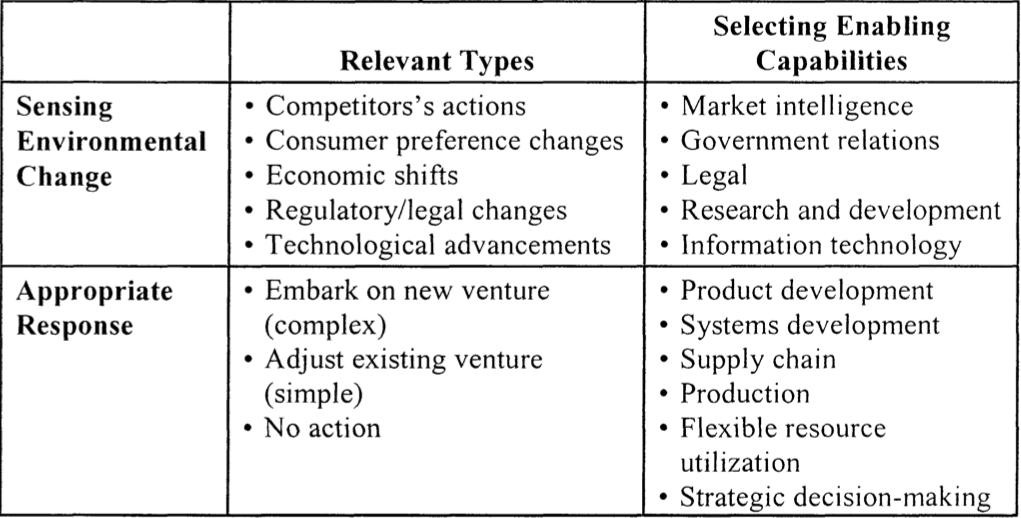Agile software development has become well known in the IT industry. Among other things, it encourages rapid and flexible response to change. A more general definition of agility, that applies to the entire firm, is that of Enterprise agility.
Enterprise agility is defined by Overby, Bharadwaj, and Sambamurthy [1] as the ability to sense environmental change and respond readily. Processes in the enterprise that are not relevant for these abilities, are not included in the enterprise agility concept. It applies to both strategic and operational issues, and it can apply to both proactive and reactive moves.
The environmental changes can be broken down into multiple types. Types can be actions taken by competitors, changes in customer preferences, technological changes, etc. Similarly, the responding capabilities can be broken down into multiple types. For example adjusting product features, launching a new product, or strategically choosing not to act on the change. Another decomposition of the sense and respond capabilities, is by their enablers. Their research & development department may for example enable a firm to readily respond to a technological change, and the sales department may enable the firm to detect a change in customer preferences, possibly at an earlier time than the majority of the actors in the market. The resulting decomposition is summarized by [] and reproduced in the table below. The term “systems development” includes “software development”.

Table: Decomposition of sensing and responding capabilities
A firm can be categorized as having either a low or a high sensing capability, and a low or high responding capability, giving 2×2 combinations, which can be viewed as quadrants along two axis. When positioning companies along these two axes, measurements should be employed in order to produce a representative average ability. Only companies with the combination of high sensing- and high responding capability are labeled as “Agile” in the framework.
All firms may not benefit from moving into the high responding, high sensing quadrant. Investments in high sensing and high responding capabilities may be wasteful, if the environment of the firm is sufficiently stable. For industries and companies highly affected by environmental changes, for example rapid technological changes, the ability to sense these changes and respond readily, i.e. enterprise agility, is a factor in determining their success.
A similar concept is that of “business agility”, defined by Bloomberg and Schmelzer [2], as the ability to respond quickly and efficiently to changes in the business environment and to leverage those changes for competitive advantage. Here, the benefit for the business is explicitly mentioned. To achieve agility in the business, agility must be part of the requirements when building software. Bloomberg calls this requirement the business agility meta-requirement (a requirement to requirements), and argues that governance is the central tool for ensuring both people and technology behave the way we want them to in order to achieve business agility.
References
[1] Overby, Eric, Anandhi Bharadwaj, and V. Sambamurthy (2006). “Enterprise agility and the enabling role of information technology”. In: European Journal of Information Systems 15.2, pp. 120–131. PDF
[2] Bloomberg, Jason and Ronald Schmelzer (2013). The agile architecture revolution: how cloud computing, rest-based SOA, and mobile computing are changing enterprise IT. John Wiley & Sons, Inc. isbn: 9781118557006.